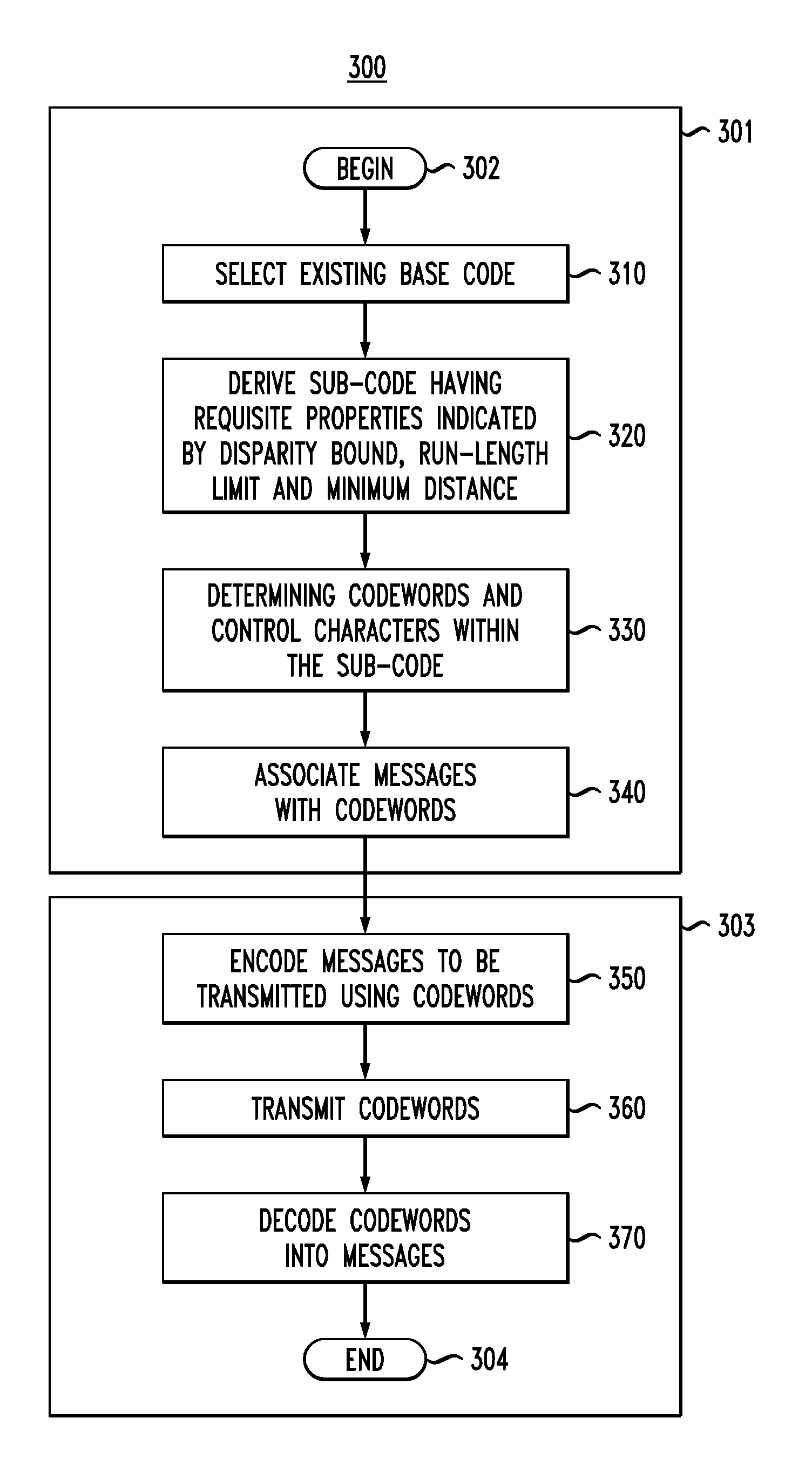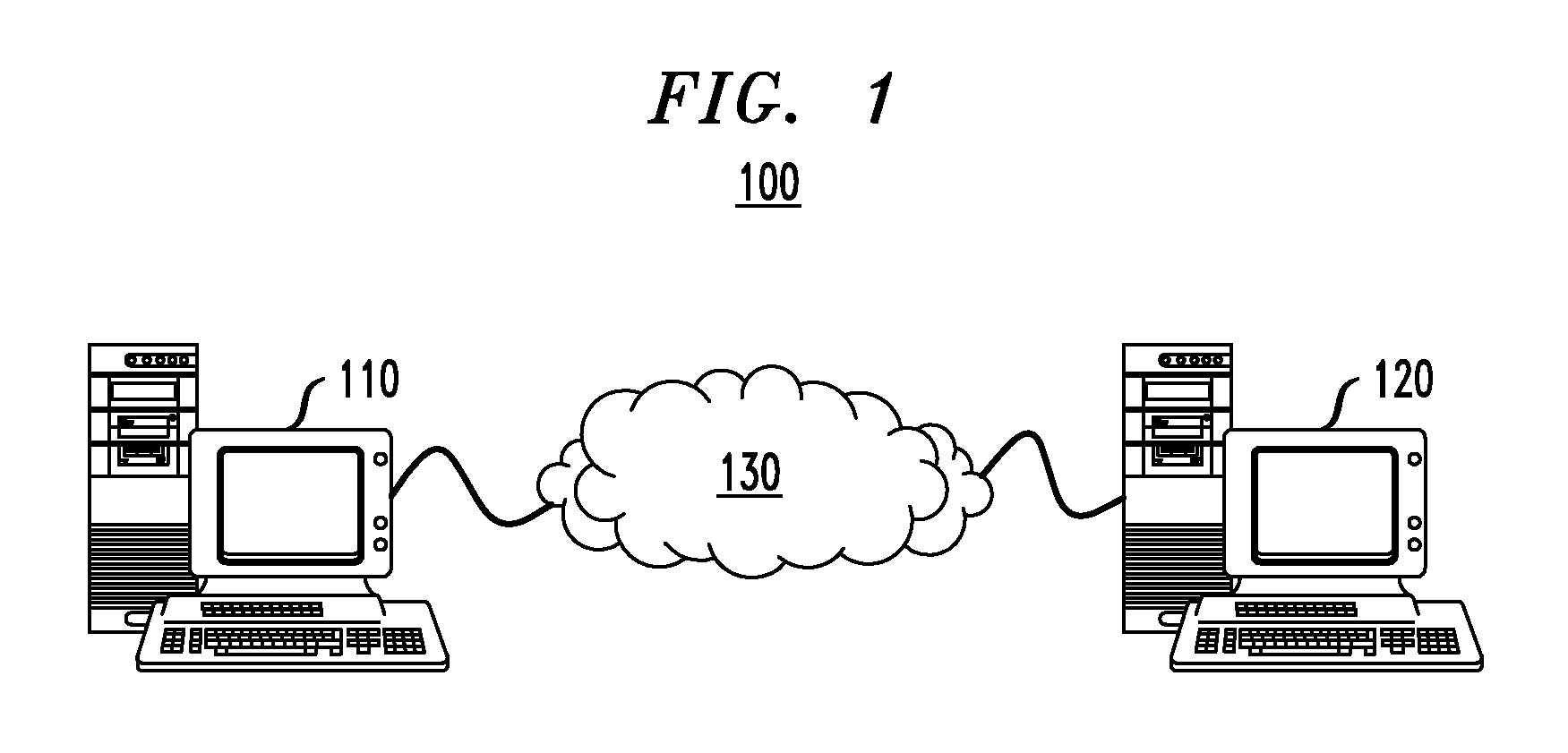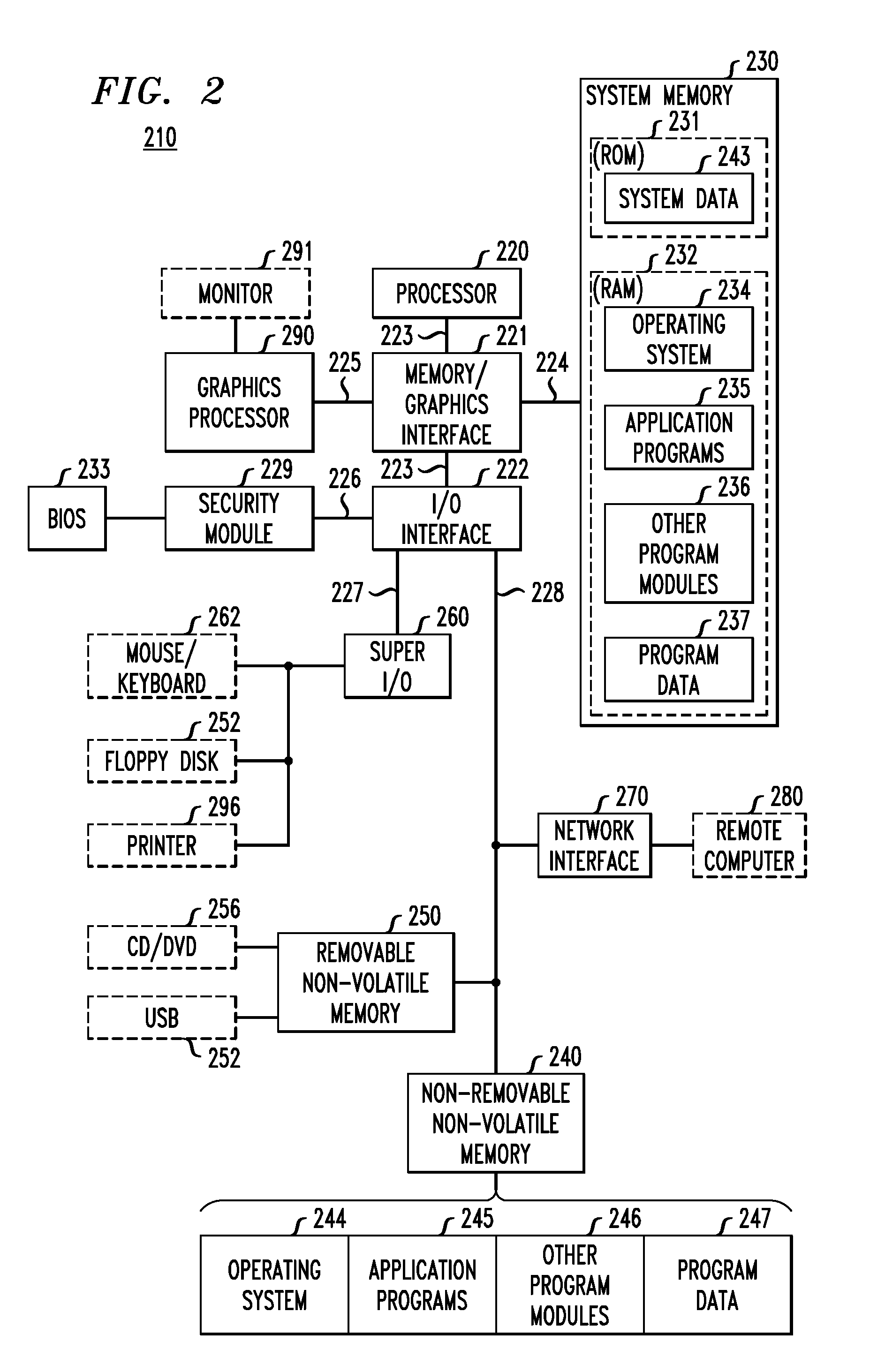Modulation-forward error correction (MFEC) codes and methods of constructing and utilizing the same
a module-forward error correction and code technology, applied in the field of binary block transmission codes, can solve the problems of not addressing all or even a majority of the common transmission problems, error correction is applied in the direction of coding, digital transmission, code conversion,
- Summary
- Abstract
- Description
- Claims
- Application Information
AI Technical Summary
Benefits of technology
Problems solved by technology
Method used
Image
Examples
first embodiment
[0085]FIG. 4 depicts an Encoding Processor in accordance with one embodiment of the present invention. As shown in the Figure, there are two embodiments that may be selected for processing the encoding of the Message. In a first embodiment, following the path down the left side of the Figure, each Message is processed using a Lookup Table 420, which contains the value of the codeword to which the Message is encoded. In such an embodiment, the inputs include the Message, including a control flag indicating whether the Message is a Data Message or a Control Message, such as a comma, as well as the present state indicator.
[0086]The present state indicator identifies the current disparity state of the transmission, and is updated according to the state machine, for example, as shown in FIG. 5. In a basic embodiment, the codewords are grouped into positive- and negative-disparity pairs. Thus, a decision is made during the Message encoding process, as to which of the pairs will be used as...
second embodiment
[0091]Returning to FIG. 4, in the second embodiment for processing the encoding of the Message, following a path down the right side of the Figure, each Message is processed by a computational encoder 430, as detailed in FIG. 6. The Computational Encoder may be advantageous and more efficient for larger codes, for which direct use of lookup encoding may be impractical or undesirable. Computational Encoding makes use of the underlying mathematical structure of the Base FEC Code. In such an embodiment, a first step is to use a Lookup Table 620 to process the Message 610, including a control flag and state identifier, to obtain a base FEC Message 630 that will be processed using methods available for the Base FEC Code, as shown in block 640.
[0092]In the exemplary embodiment, discussed supra, the Base FEC code is a cyclic Hamming code. This is a linear code, for which linear algebraic methods permit the computational conversion of a Base FEC Message to be encoded into a Base FEC Codewor...
PUM
 Login to View More
Login to View More Abstract
Description
Claims
Application Information
 Login to View More
Login to View More - R&D
- Intellectual Property
- Life Sciences
- Materials
- Tech Scout
- Unparalleled Data Quality
- Higher Quality Content
- 60% Fewer Hallucinations
Browse by: Latest US Patents, China's latest patents, Technical Efficacy Thesaurus, Application Domain, Technology Topic, Popular Technical Reports.
© 2025 PatSnap. All rights reserved.Legal|Privacy policy|Modern Slavery Act Transparency Statement|Sitemap|About US| Contact US: help@patsnap.com



